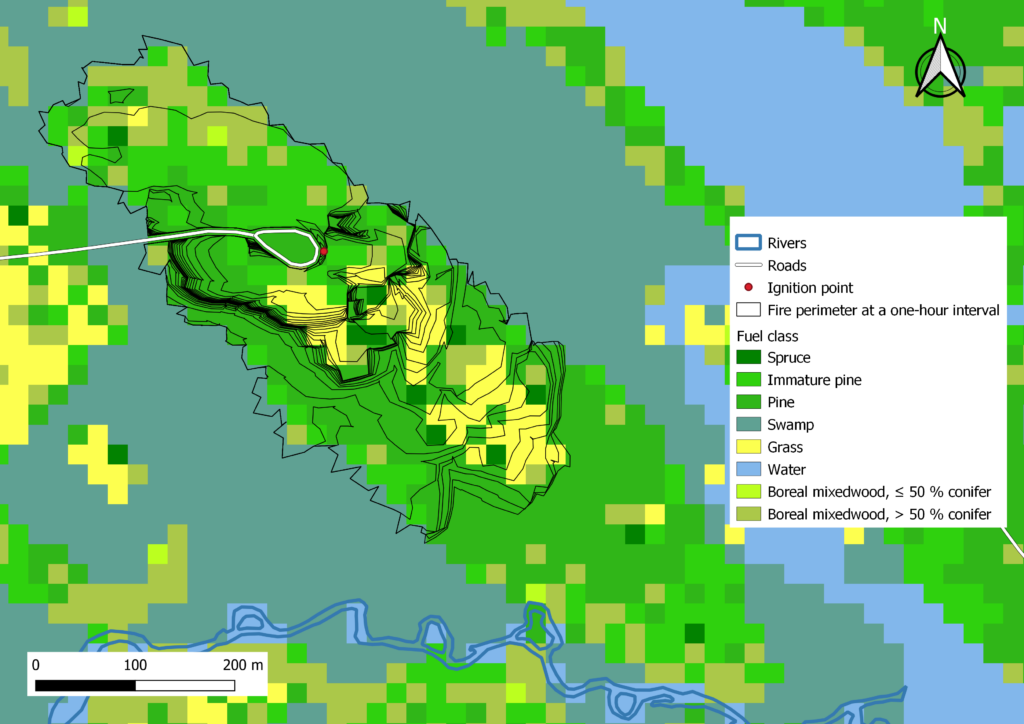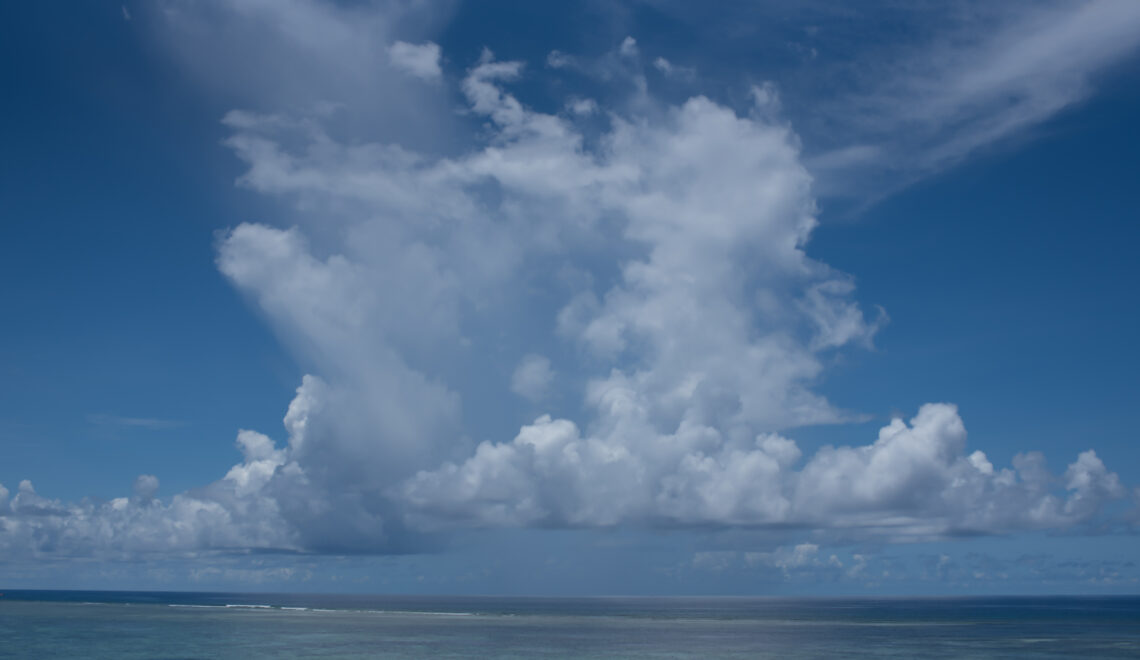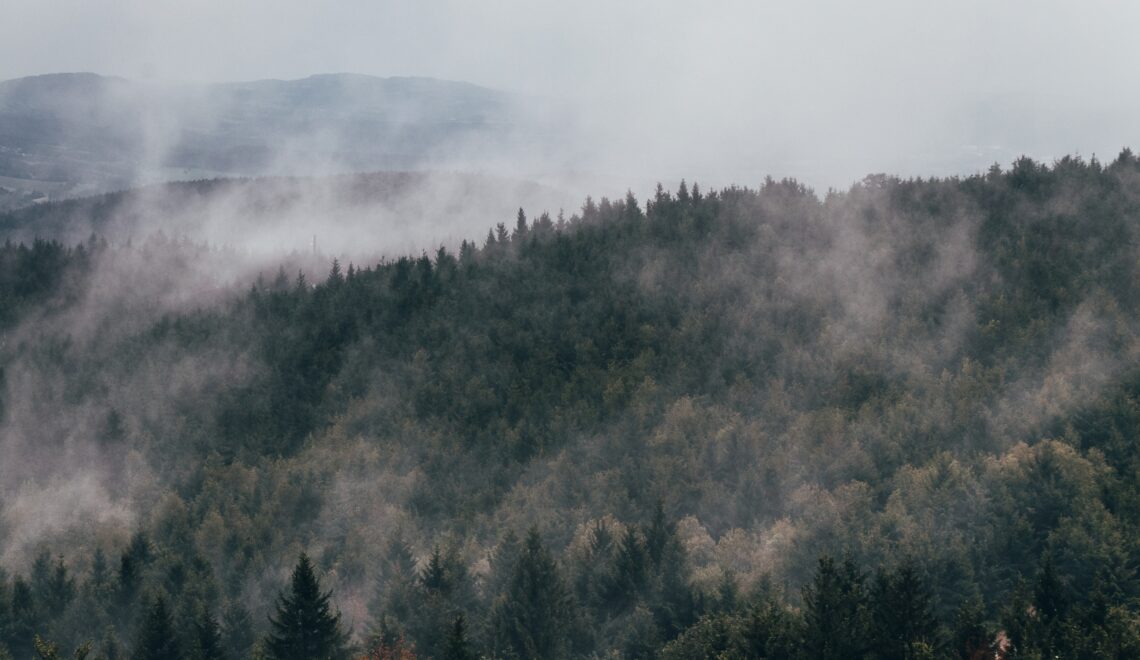Fire spread modelling programs could bring many benefits to the rescue services. Information about the potential spread of an ongoing wildfire, better planning of prescribed burning and a tool for estimating the vulnerability of high importance locations to wildfires are some of the potential benefits of such a system. In this case study, the Canadian Prometheus model has been demonstrated using open data from Finland.
JOONAS KOLSTELA
Finnish Meteorological Institute
Prometheus is a Canadian wildland fire growth simulator, which is based on the Canadian Forest Fire Danger Rating System (CFFDRS) and its two subsystems, the Fire Weather Index (FWI) system, and the Fire Behaviour Prediction (FBP) system. The FWI subsystem is used to calculate the effects of fuel moisture and wind on fire behaviour (Van Wagner, 1987). The FBP subsystem uses information of the 16 different fuel classes, weather, topography, foliar moisture content and the type and duration of the fire to estimate the different statistics of the modelled fire (Forestry Canada, 1992).
During the summer of 2014, a wildfire of 10 hectares was ignited in the Lieksa municipality of Finland, due to a tree falling on a powerline. The workers of Lieksa fire station gave estimates of the ignition location and time and of the final fire perimeter.
In order to model this wildfire using Prometheus, information about elevation, fuel grid, place and time of the ignition were required, together with information about the different firebreaks in the area and weather data for the duration of the fire. The 2m resolution Digital Elevation Model (DEM) of the area and the vectorized firebreaks (roads, rivers, swampland) were downloaded from the National Land Survey of Finland (NLS) spatial database. The weather data was downloaded from the Finnish Meteorological Institute (FMI) weather database. The ignition time and location were provided by the Lieksa municipality fire station. The fuel grid (Fig. 1) was created by Arbonaut Oy Ltd by classifying the different fuel classes using NLS LiDAR data and Finnish Forest centre forest resource data.

The first simulations produced unrealistic fire perimeters which were wrong in shape and size compared to the real events. By adding swamplands, roads and rivers as firebreaks, and by choosing more suitable fuel classes to represent the different vegetation types found in the area, the simulation produced a more realistic final perimeter of 11,7 hectares (Fig. 1).
This case study shows that the different types of data required to run a Prometheus simulation are high quality and open data in Finland. However, it would be important to gather information about fire spread related values in Finnish fuel types in order to ensure the accuracy of the used fuel models. This could be a great opportunity for a Nordic co-operation for collecting information from real and prescribed burns in different fuel types.
Acknowledgements: I would like to thank FMI, Arbonaut Oy Ltd for providing me with the fuel grid to be used in the Prometheus simulation, and the workers of Lieksa fire station for providing details of the wildfire.
References
Forestry Canada Fire Danger Group, 1992: Development and Structure of the Canadian Forest Fire Behavior Prediction System. Forestry Canada, Headquarters, Fire Danger Group and Science and Sustainable Development Directorate, Ottawa. Information Report ST-X-3. 64 pp.
Van Wagner, C.E., 1987: Development and structure of the Canadian Forest Fire Weather Index System. Can. For. Serv., Ottawa, ON. For. Tech. Rep. 35. 37 pp.
Header image: Pixabay
HOW TO CITE THIS ARTICLE:
Kolstela J., 2019: Simulating a 2014 wildfire in Lieksa (Finland) using the Canadian Prometheus fire growth simulation model, FMI’s Climate Bulletin: Research Letters, 1(2), 7, DOI: 10.35614/ISSN-2341-6408-IK-2019-16-RL
CITATION INFORMATION:
Authors: Joonas Kolstela
Received: September 10, 2019
Accepted: December 13, 2019
First online: December 19, 2019
Journal: FMI’s Climate Bulletin: Research Letters
Volume: 1
Issue: 2
Page: 7
DOI: 10.35614/ISSN-2341-6408-IK-2019-16-RL




